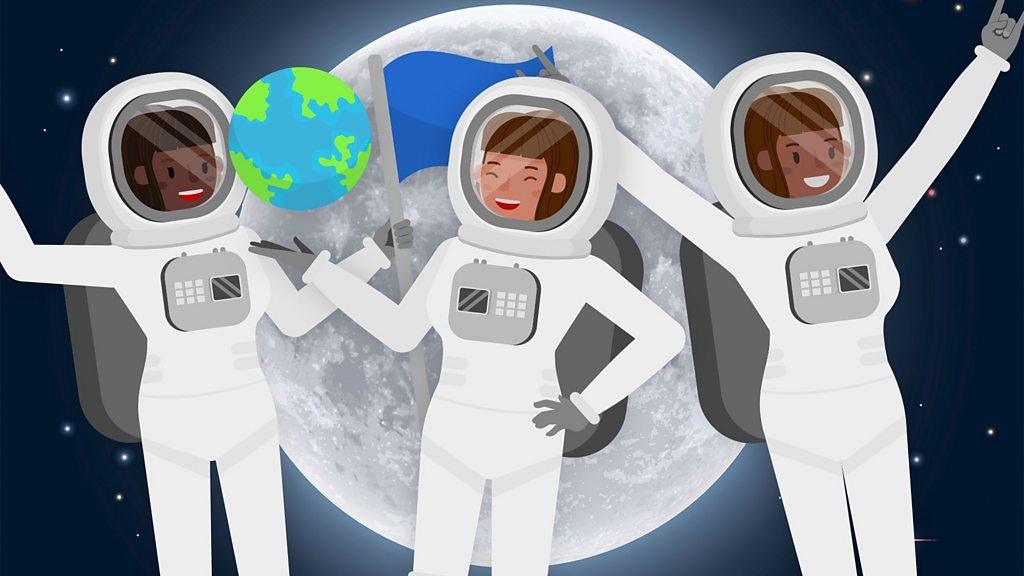Spacewalk on International Space Station completes part of the job
- Published
- comments
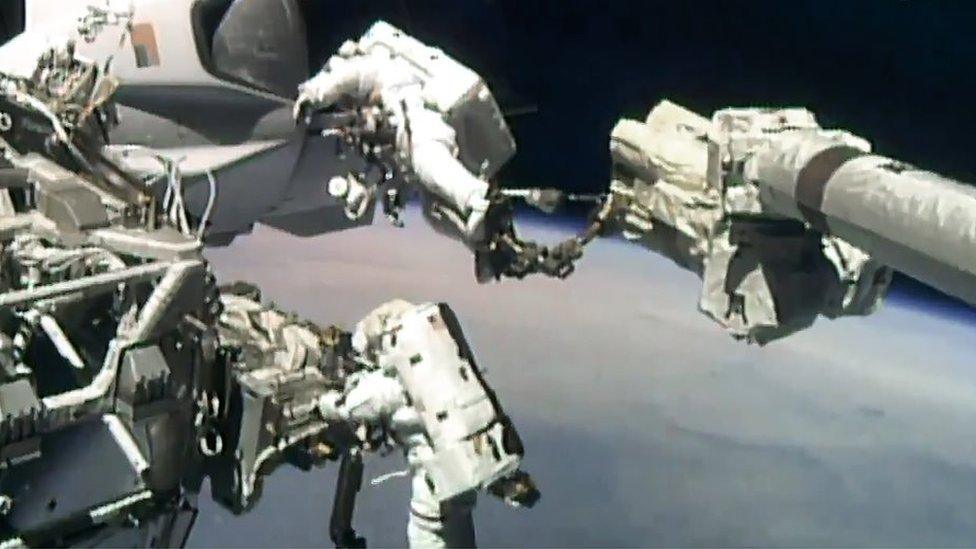
The spacewalk was a partial success and the astronauts will hope to complete the work on the 1 February
Two astronauts have taken part in a spacewalk outside the International Space Station (ISS) on Wednesday to install new technology.
It was an epic seven hour mission, but only part of it was successful.
NASA's Mike Hopkins and Victor Glover installed a new antenna on Columbus - the European Space Agency module on the ISS.
However, only four of the six cables were able to be attached - the other two will be attached on a future space walk. It means the new system is partially operational.
Once it's fully operational, the new communication system will help scientists get their results from space back to Earth much quicker.
Currently, it takes months for results to be returned to Earth because they use a hard drive to send the results back and sometimes data can be lost if corrupted.
This new technology will mean results can be delivered to scientists in just a day or two which means they get faster results and can change experiments quickly if there are any problems.
It's called ColKa which is short for 'Columbus Ka-band Terminal' and it is funded by the UK Space Agency.
It's the UK's first major industrial contribution to the ISS spacecraft.
What happened on the space walk?
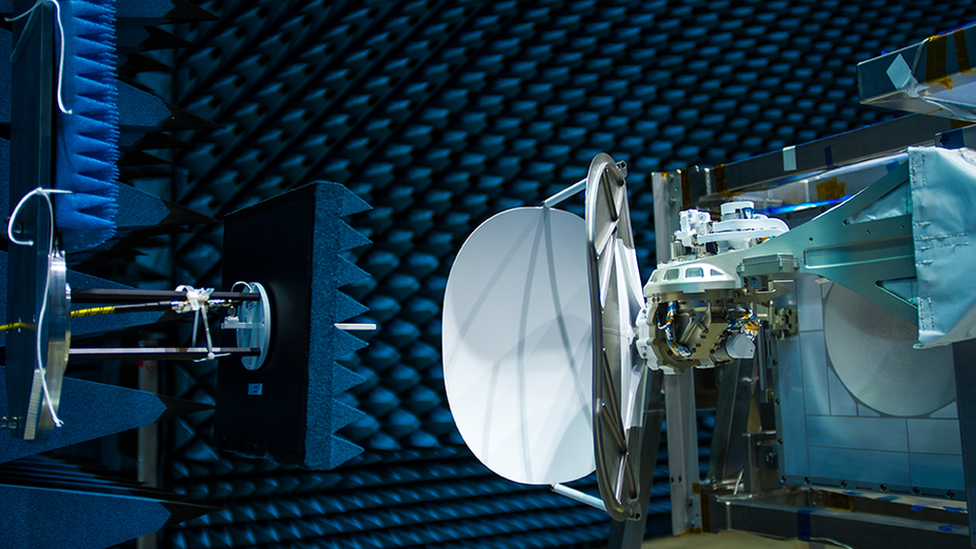
The ColKa antenna is the new device which will help scientists receive their results quicker
NASA astronauts Victor Glover and Michael Hopkins went outside the space station for six hours and 56 minutes and managed to attach the device which is the size of a large suitcase.
They also removed a pair of grapple fixture brackets, which are small connectors, on the far left truss (structure) in preparation for future power system upgrades.
Glover also worked to replace a suspected broken pin inside the station's airlock as a "get ahead" task.
However, after closer inspection, it was found that a replacement pin was not needed as the current pin was working just fine.
Are space walks dangerous?
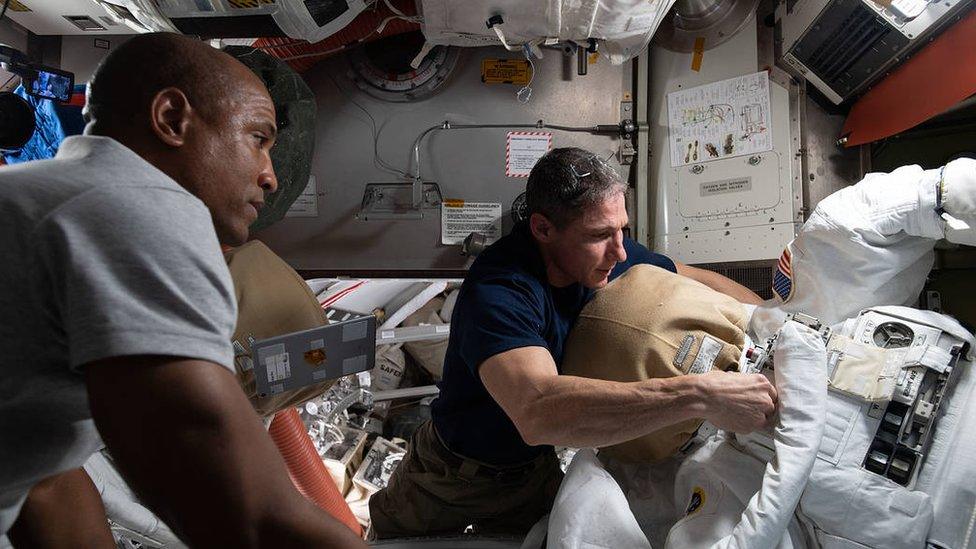
NASA astronauts Victor Glover (left) and Michael Hopkins (right) ventured outside the space station to upgrade the ISS.
Astronauts are highly skilled individuals and must complete years of training to be able to carry out difficult tasks on board the ISS.
When conducting a space walk, they face very tricky conditions and have to go without food for hours as they work in the harsh vacuum of space.
Temperatures can be as hot as 120 degrees Celsius in the sunlight or down to minus 160 degrees Celsuius when the sun is out of sight.
But ISS crew members have conducted 233 spacewalks over the years, tallying up an amazing 61 days, 1 hour, and 47 minutes working outside the station.
Glover and Hopkins will take part in another space walk on Monday 1 February.
Strengthening the speed at which data can be transmitted from space will bring enormous benefits to scientists and researchers across Europe, helping them progress vital research faster.
How do we get information from the ISS?
The data received will be transmitted to a ground station in Oxfordshire, then transferred to the Columbus Control Centre and user centres across Europe.
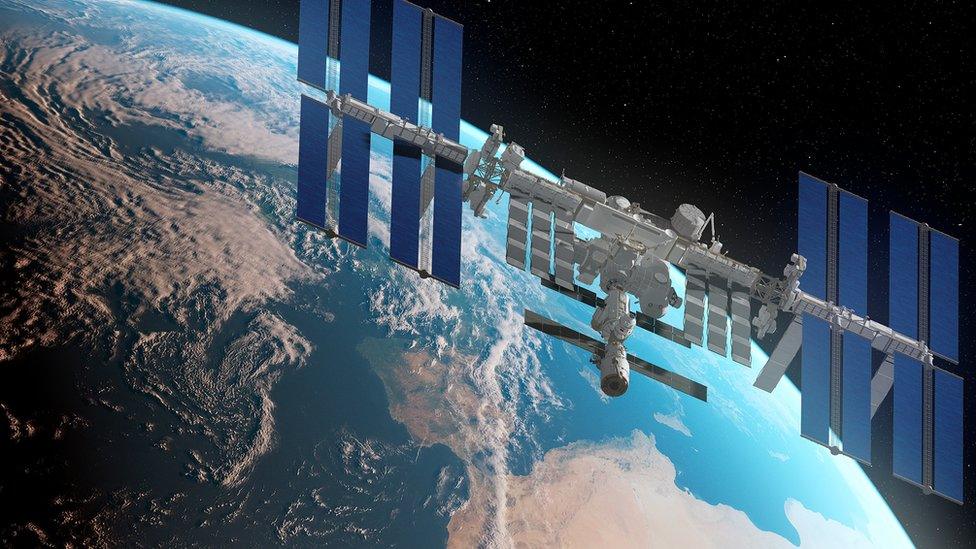
UK's Space Mission
The UK has invested lots of money into the space industry recently.
In 2019 the UK committed £180 million to the European Space Agency global exploration programme, which will look at bringing back the first samples from Mars and support the US ambition to have a presence on the Moon.
Related topics
- Published7 January 2016
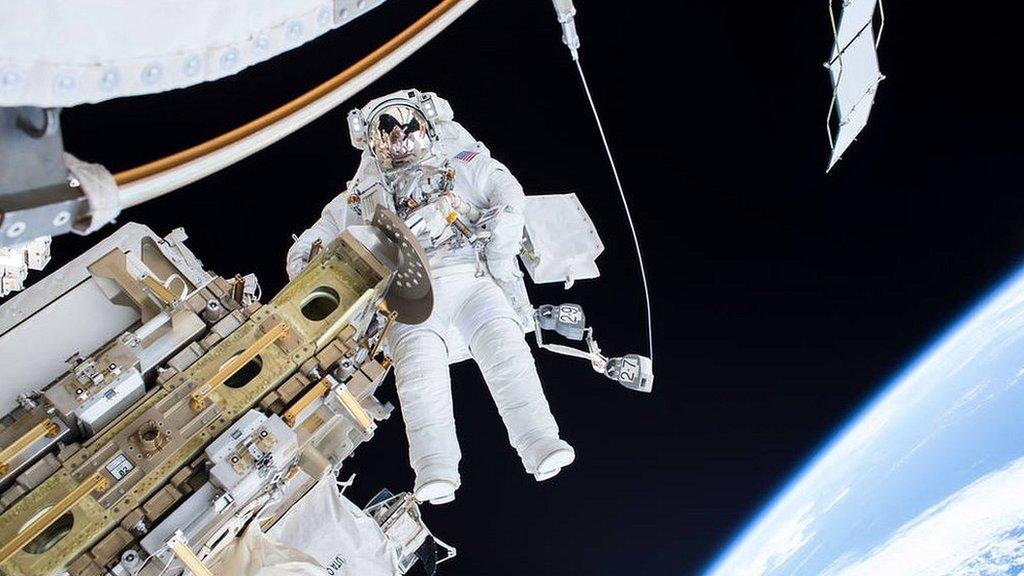
- Published17 November 2020
